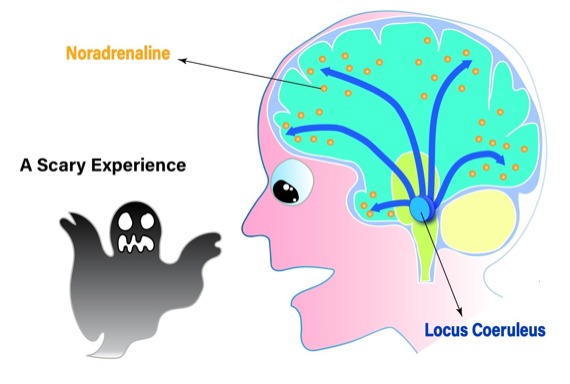Exhalation Techniques to Relax The Body
by Jared Packer
“Methods are many, principles are few” - proverb
Exhalation techniques for breathing are plentiful. Most of them operate under the same basic principles. These are exercises that have been helpful for myself and my clients to move towards relaxation. This is by no means an exhaustive list. Try them out, and use whatever works for your unique body.
The Science Behind Breathing & Exhalation
-
Breathing is both voluntary and involuntary.
-
The fight or flight response will involuntarily increase breathing rate and volume.
-
Having awareness and voluntarily decreasing breathing rate and volume can blunt the fight or flight response.
-
This works by activating the parasympathetic branch of the nervous system - otherwise known as “rest and digest”. For more details on this branch of the nervous system, read our article on nasal breathing.
Prolonged, Slow Exhales During Breathing Relaxes The Body
Slowed and prolonged exhales during breathing can help to relax the body. During inhalation, the lungs expand, and their vessels fill with blood for O2 and CO2 to move between the lungs and the circulatory system. This causes a slight decrease in systemic blood pressure.
To counteract this, the nervous system reflexively increases heart rate and constricts blood vessels. This is a sympathetic (fight or flight) response. The reverse is also true. During exhalation, blood moves out of the vessels of the lungs, which causes a slight increase in systemic blood pressure. The nervous system reflexively decreases heart rate and dilates blood vessels. This is a parasympathetic response.
Utilizing a slow exhale takes advantage of this reflex.
As we breathe about 20,000 times per day, the heart is constantly shifting its rate of contraction. This is the basis of Heart Rate Variability (HRV). It is hypothesized that the more responsive our heart rate is to these fluctuations, the more effective our parasympathetic nervous system is functioning.
How Reduced Breathing Rates Relax The Body
An area of the brain called the Locus Coeruleus (LC) acts as a hub to excite all of the areas involved in the fight or flight response. When the LC is stimulated, it sends out signals throughout this network.

http://sitn.hms.harvard.edu/flash/2018/mysterious-fear-learner-locus-coeruleus/
In addition to being activated by threatening experiences, the LC can be turned on by breathing. Extensions from the LC monitor your breathing rate, rhythm, and levels of blood CO2, pH, O2 (all affected by breathing). When it detects increased breathing rates, irregular rhythms, increased CO2, or decreased pH, it will activate the fight or flight response.
Exhalation Techniques
Here are a few more exhalation breathing techniques to try:
- The basic exhalation technique
- Hum or sing while exhaling
- Exhale Through Pursed Lips or Straw
- Let Go of Any Tension
Technique 1: The Basic Exhalation Technique
Inhale for 4 seconds, slowly exhale for 6 seconds. Repeat for 5+ minutes.
-
Breathe in through your nose.
-
Breath size should not increase substantially.
-
Experiment with an inhale:exhale ratio close to 1:2 that works well for you. Choose a ratio that slows down your breathing rate but does not induce panic, or an air hunger greater than 2/10.
Many individuals experience relaxation from this simple exercise alone.
Technique 2: Hum/Sing While Exhaling
This releases nitric oxide (NO) in your nasal cavities. NO dilates blood vessels, and contributes to a parasympathetic response.
In addition, humming and singing may stimulate the vagus nerve. This is a large nerve with many functions, a major one being to send information from your organs up to your brain.
When the vagus nerve is stimulated, it puts the brakes on the fight or flight response. Extensions from the vagus nerve innervate muscles that control the voice box, and the main branch travels in close proximity to the vocal cords. You can observe its relative position in this drawing:

http://elementalhealthandnutrition.com.au/straw-breathing-anxiety/
Exhaling through pursed lips or a straw will naturally slow down your exhale, and your breathing rate by extension.
In addition, the intra-abdominal pressure created from straw/pursed lipped exhaling may act to stimulate the vagus nerve, and decrease the fight or flight response.
Individuals with certain health conditions can become tachycardic (when the heart beats inappropriately fast), or go into atrial fibrillation (or AFib- when the heart rate beats fast and at an irregular rhythm). When this happens, a valsalva maneuver is often used as an attempt to bring the heart back to a normal rate and rhythm by activating the vagus nerve. This is performed by holding your breath and squeezing your abdomen.
NOTE - DO NOT USE THE VALSALVA MANEUVER AS A RELAXATION TECHNIQUE
Exhaling through a small opening is a very toned-downtoned down version of this, but perhaps it modifies the stress response in a similar way.
Technique 4: Let Go of Any Tension
During your exhale, and particularly at the end, see if you can let go of any tension in your body.
You can try a mantra such as - “as I breathe out, I let go”.
This is an effective breathing technique to bring your attention to your body, to notice what areas feel tense, and what areas feel good. If you find any stubborn places, be mindful not to try too hard. Just notice them and move on.
How to Know If Exhalation Working
Look for indications of parasympathetic activity. Some of these include when you use these breathing exercises:
-
Salivation
-
Heart Rate Decreases
-
Muscular tension decreases
-
The feeling of calm/relaxation
Give yourself a few minutes before you conclude if it’s working or not. Keep in mind that shifting between a stressed/relaxed state is like a dimmer switch rather than a light switch, so results accumulate.
In Closing: Exhalation Techniques
Remember the whole point is to ease the fight or flight response. If paying attention to your breathing makes you feel panicky, move on to something else.








